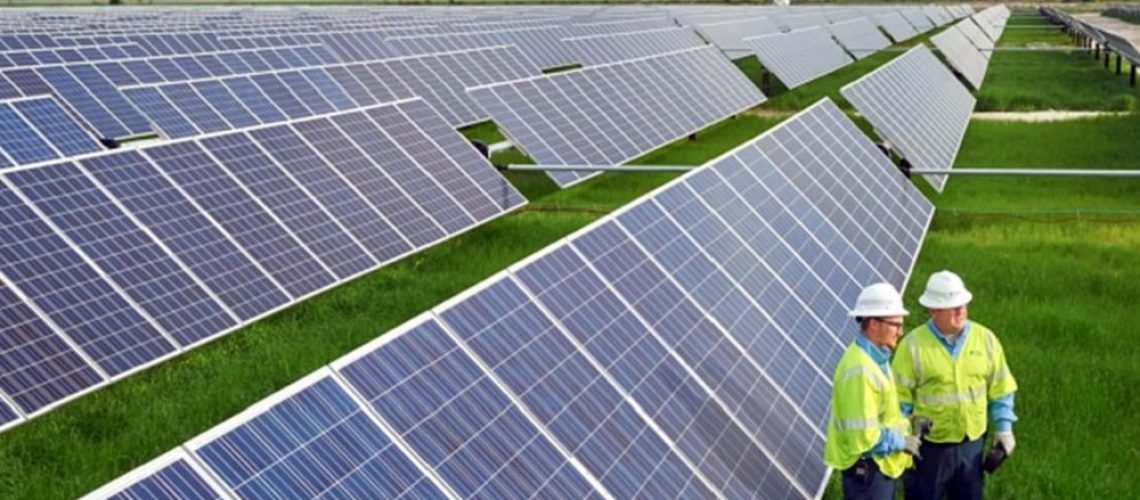North Carolina is ranked fourth in the country for solar installations, growth that is driven by solar supportive renewable energy portfolio standards, policies and regulations.
The pv magazine USA tour of solar incentives state by state now takes us to our fifth stop in the south Atlantic states: North Carolina.
North Carolina currently has nearly 8 GW of solar installed or enough to power nearly one million homes. Its ranking of fourth in the nation in terms of capacity deployment (according to the Solar Energy Industries Association—SEIA) is up from eighth in 2021. The state is currently getting more than 8% of its electricity needs from the sun.
One reason that the state has leapfrogged other states is due to its Renewable Energy and Energy Efficiency Portfolio Standard (REPS), established by Senate Bill 3 in August 2007, which required all investor-owned utilities in the state to supply 12.5% of 2020 retail electricity rates from eligible energy sources by 2021. Municipal utilities and electric cooperatives must meet a target of 10% renewables by 2018.
Other laws have also influenced the growth of solar in the state. For example, a 2017 law, HB589, authorized solar leasing, which gave a much-needed boost to residential solar companies and offers consumers more options to control their energy use. This past summer the Supreme Court of North Carolina has issued an order affirming homeowners’ right to install rooftop solar, even if previously prohibited by a Homeowners association (HOA). The decision was based on North Carolina’s 2007 solar access law, which states that HOA’s cannot ban solar explicitly or effectively, and that it can only bar front-facing solar arrays if it explicitly lists them in its community rules.
North Carolina is also one of many states that offers net metering. HB 589 was signed into law in 2017 and requires, among other things, that each investor-owned utility must file revised net meterting rathes with the North Carolina Utilities commission. The rates must be “nondiscriminatory and established only after an investigation of the costs and benefits of customer-sited generators.” The new rates also must ensure that net metering customers pay their full fixed cost of service, which may include fixed monthly energy and demand changes Customers who own their own systems and already on their utility’s net metering tariff may stay on that tariff program until 2027.
While North Carolina is only required to revisit the current net metering structure some time before 2027, the state’s current rebate program is set to expire this year, which has created an environment of urgency for clean-energy focused groups hoping to avoid the industry-harming effects that even a couple of weeks of incentive uncertainty can have on the residential solar market. Duke Energy and a collective of some of the largest rooftop solar installers in North Carolina came to terms on a modified version of Duke Energy’s Solar Choice Net Metering proposal, and it will now go before the North Carolina Utilities Commission for final approval. Once approved, the new net metering tariffs, known as the ‘Proposed Bridge Rate’ will go into effect for customers submitting applications through December 31, 2026, subject to annual capacity caps. Customers who choose to enter a residential solar installation into the Proposed Bridge Rate may do so for up to 15 years, subject to certain limitations. The settlement also includes a provision under which it can be discontinued if state regulators approve a package of incentives equivalent to at least 60 cents per watt. According to Duke, the Proposed Bridge Rate will allow the company more time to develop the incentive package.
Community solar
Community Solar in North Carolina is also governed by House Bill 589. The participating utilities must file a plan with the Commission to offer a community solar energy facility program for participation by its retail customers. Each community solar facility must have at least five subscribers and no single subscriber 40% interest. Duke Progress and Duke Energy must make this available on a first-come first-served basis until the total nameplate generation of its community solar facilities is at least 40 MW. In addition, community solar projects may have a nameplate capacity of up to 5 MW. Each subscription to the project shall be sized to represent at least 200 watts of the community solar facility’s generating capacity and to supply no more than 100% of the maximum annual peak demand of electricity of each subscriber at the subscriber’s premises.
Property tax abatement
In August 2008, North Carolina enacted legislation that exempts 80% of the appraised value of a solar installation from property tax. A memorandum sent to County Commissioners in February 2011 clarified that residential PV systems that are not used to generate income or in connection with a business may be entirely exempt from property taxes as non-business personal property.
Landmark solar installations
In January of this year Duke Energy announced two recently completed projects added just over 70 MW to the company’s ever-growing utility-scale project portfolio. The projects are the 50 MW Broad River Solar power plant and the 22.6 MW Speedway Solar power plant.
Construction of the Broad River project began last March, with Swinerton physically constructing the facility. Located on roughly 500 acres, the project is comprised of more than 170,000 solar panels and created more than 100 jobs during peak construction.
Construction on Speedway Solar also began in spring 2021, with efforts officially beginning in May. The project’s 185-acre site features 77,000 Jinko bifacial modules mounted on single-axis trackers. During peak construction, the project created roughly 70 jobs, and Duke awarded a $5,000 grant to the Cabarrus County Education Foundation to increase internet connectivity for students in Midland and Mt. Pleasant, N.C., much like the company did with the Broad River project.
Last time, the pv magazine tour of the 50 states of solar took us to Virginia, and next we will continue to travel through south Atlantic, stopping off in South Carolina.



